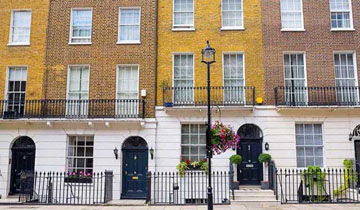5 min read
What are the pros and cons of underfloor heating?
With the heating season just around the corner, and one of the busiest times of the year for any heating manufacturer, we thought it would be a good...
3 min read
 Robin Bell
:
Feb 16, 2022
Robin Bell
:
Feb 16, 2022

Heating a listed historic building is often seen as a huge challenge mainly down to the simple fact the fabric of the building is not up to current building regulations. One thing that is very common in these building is uninsulated cavity walls, single glazed windows, draughts, cold air whistling through the cracks, rising damp or even the existing heating system malfunctioning and clogged up from working constantly over the many years – sound familiar?
There have been many situations where these iconic buildings are renovated or even converted into residential apartments. But when it comes to heating it’s one subject that can be often pushed down the road or the challenges it presents considered virtually impossible to overcome.
Most modern heating systems are designed based on heat loss calculations. This calculation uses standard which are laid out in ‘Heating systems in buildings – Methods for the Calculation of the design heat load’ BS EN12831:2003 and the ‘Domestic Heating Design Guide’ by CIBSE. The building material used has a uValue which measures the rate of heat transfer through it. The higher the uValue, the worse it is at keeping heat in the building. For example, an uninsulated wall will have a higher uValue than one that is well insulated. So, as you can imagine, results will vary building by building.
Older buildings are generally very draughty, are often are fitted with single glazed windows, have limited wall space or even listed subfloors.
Good question! This is fundamental when considering any heating system.
Older buildings generally have two problems which make the building feel colder as well as causing an increase in energy demand. One is draughts (air movement) caused by the gaps in the building envelope such as around windows and doors. The other is thermal bridging which is due to the inside and the outside of buildings being connected by thermally conductive elements such as timber joists passing through an insulation layer.
There are some great articles available online. Historic homes advisor Robert Lloyd-Sweet sets out 6no. top tips that can be implemented to make old homes more energy efficient.
If you are looking for a whole building approach to improve energy efficiency we recommend this Historic England’s guide.
Electric underfloor heating is certainly an option. More specifically a Foil electric underfloor heating system is much more sympathetic to the requirements of older buildings. Heating Foil is a floating underfloor heating system which means it won’t penetrate the listed subfloor, won’t intrude on wall space, and can be installed under the majority of floor coverings.
Like many other electric underfloor heating manufacturers, we’ve seen an increase in the number of projects where electric underfloor heating has been used to overcome the challenges older buildings have when it comes to heating.
Project example: Apsley House
Once known as ‘Number 1 London‘, Apsley House is the home to the Dukes of Wellington. The Grade I listed building stands alone at Hyde Park Corner and needed an upgrade to the existing heating system in a total of five areas.
The stakeholders of Apsley House were considering the feasibility of a new heating system in five areas of the house because the LTHW wall mounted radiant panels were difficult to maintain due to their location and finish.
Following consultation, a Foil system was chosen as the ideal electric underfloor heating solution for the project because the carpet floor covering could simply be lifted up and the Foil build-up laid underneath along with HDF overlay board. The existing carpet was carefully re-laid and a timber shim made to remove trip hazards.
The total build-up was only 15mm in height and the heating output matched the requirements needed for each room. In total 249m2 of ThermoSphere Foil was installed and as the thermostats had to be hidden away, bespoke extra-long cold tails were manufactured.
Project example: Harley Street
Harley Street in Marylebone in central London is renowned for being the location for some of the very best healthcare professionals with over 5,000 operating in and around the area. The Grade II listed buildings have housed many icons of the medical world including Florence Nightingale who lived at Number One.
As a Grade II listed building there were limitations on the heating systems that could be used for the property. The original sub floor had to be retained and that meant the system could not be fixed or screwed down to the substrate. Another consideration was the output of the system which needed to be bespoke. So, a Foil system was a perfect fit.
Projects like Apsley House and the one at Harley Street have common listed building challenges due to restrictions such as listed subfloors. This means that more common mesh underfloor heating mats could not be put forward as a solution because they need securing to the substrate using a self-adhesive layer or flexible adhesive. This would have penetrated the existing subfloor which was restricted due to the listed status of the buildings.
Now, that’s all from us for now. If you have any other questions regarding heating and listed buildings, please don’t hesitate to reach out and one of the Projects Team who will be glad to assist.

5 min read
With the heating season just around the corner, and one of the busiest times of the year for any heating manufacturer, we thought it would be a good...

9 min read
It’s great that you are thinking about installing underfloor heating for your next project. You’ll receive all the benefits that come with underfloor...

5 min read
With the colder months fast approaching, many homeowners will start to think about turning on their heating and some may even be getting new heating...